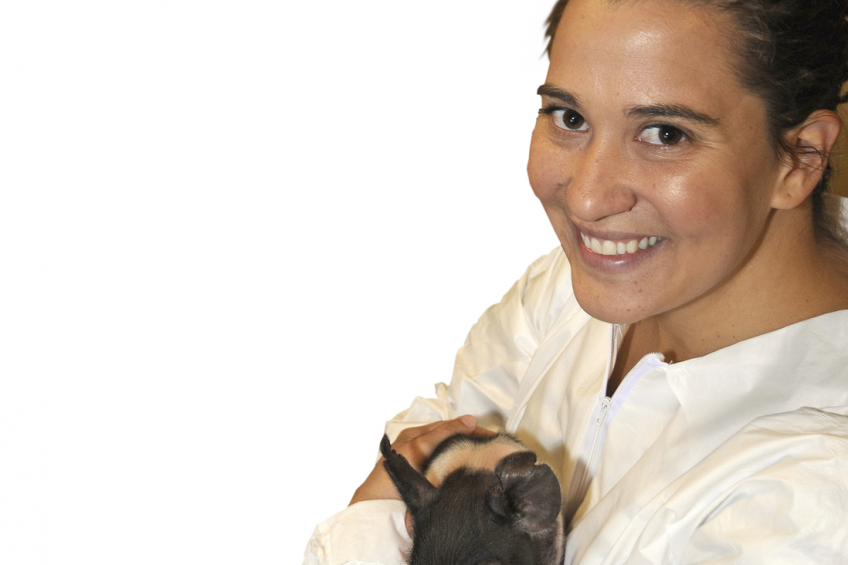Care of the compromised piglet

Piglets can represent one of the most vulnerable populations on a swine farm for several reasons. Although piglets are capable of withstanding considerable stress, multiple factors can challenge their health and welfare within the first weeks of life.
Firstly, the piglet is abruptly introduced into a farrowing environment that is drastically different from what it has become accustomed to in the womb. Managing a warm and dry area for piglets to rest while ensuring interaction and bonding with the sow is a critical first step in preparing the piglet to be successful. Painful experiences like castration and tail docking may also compromise the immune system of the piglet and can result in changes to their behaviour, often times reducing feed intake and activity. Lastly, disease challenges can have devastating impacts on the individual piglet, as we have seen last year with the introduction of PEDv into the United States.
Recognising these challenges, excellent neonatal management on farm, including treatment, supervision and supportive care are essential in minimising pain and stress and reducing risk factors that may compromise the health and welfare of the animal. Unfortunately, for some piglets, recovery is extremely unlikely regardless of the supportive care provided on farm. In these situations it is our ethical obligation as the animal caretaker to end the suffering of that individual animal through timely and humane euthanasia. Timely euthanasia reflects the compassion of the caretaker for their animals and does not imply failure.
Currently, there are several euthanasia options that can be performed on neonatal piglets. Manual blunt force trauma has been shown to result in immediate unconsciousness and rapid death of the piglet when performed correctly. However, this technique is often not aesthetically acceptable to the general public and some caretakers are not comfortable performing this technique. Alternative techniques for neonatal piglet euthanasia include CO2 gas euthanasia and non-penetrating captive bolt gun. CO2 gas euthanasia results in loss of physical sensation followed by loss of consciousness and death.
Currently, Euthanex AgPro has developed a commercial automated CO2 system that allows caretakers to euthanise piglets in a humane and consistent manner on farm. Non-penetrating captive bolt guns work in the same manner as blunt force trauma but the piglet remains stationary and is often restrained in a V-trough. Several non-penetrating captive bolt guns have come on the market in the past years. The Cash Special Heavy Duty Captive bolt gun is sold by Bunzl Processor Division and comes with a non-penetrating head and a penetrating head. This option allows for use of the captive bolt gun for piglets (non-penetrating head) and sows and boars (penetrating head). The Zephyr-E has been developed by Bock Industries and is a non-penetrating captive bolt gun powered by a standard air compressor (120 PSI) that can euthanise piglets up to 9 kg. This allows the ability for the caretaker to easily conduct a second shot if needed and can be utilised around the farm by attaching the gun to a transportable CO2 canister.
Euthanasia is a sensitive and emotional topic for the public and swine
caretakers. It is imperative that we humanely euthanasia compromised piglets in a timely
manner to minimise pain and stress and recognise
that the quality of the animal’s death is as important a welfare concern as the quality
of its
life.











